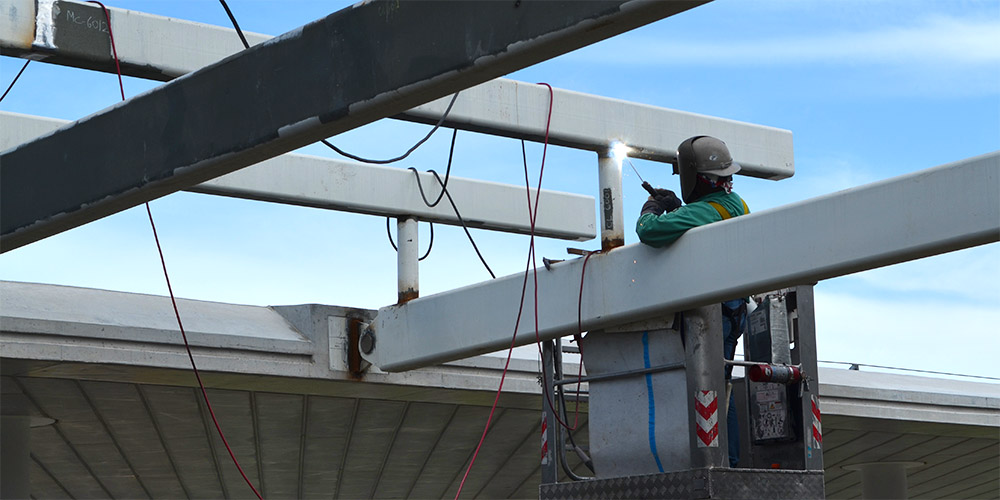
Frost Science is made up of a completely unique set of buildings that required innovative engineering achievements. From the 25-hour concrete pour forming the sloped Gulf Stream Aquarium and storm resiliency efforts to the “orange peel” sections making up the dome of the Frost Planetarium, the site functions as a case study in innovation and engineering success.
Gulf Stream Aquarium
Centerpiece to the museum, this 100-foot wide, 500,000-gallon cone-shaped vessel has a corner-less design that allows open-water marine species such as tuna and sharks to swim continuously as they would in the actual Gulf Stream. Made of concrete and without the use of construction joints, the Gulf Stream Aquarium has 9,000 square feet of tank surface area and supports 4.5 million pounds of water.
Building the vessel required a continuous concrete pour that lasted 25 hours, distributed 1,200-cubic yards of concrete, and involved 131 cement trucks, and two teams of 150 people each. While execution had to be flawless, there were challenges. The angle of the vessel’s sides—sometimes as steep as 44 degrees—caused normal concrete to slide downhill, so engineers had to create a mixture thick enough to stay put, yet loose enough to envelop a checkerboard of rebar reinforcement. Prior to the pour, engineers performed numerous trial runs to refine both methods and concrete recipes for the perfect viscosity and hold. It was also important that the concrete be properly vibrated during the pour, even at steep angles, so as to settle and bond fully. During practice runs, workers customized their gear to vibrate at the proper angle without cutting into the surface—a first in the industry.
When the actual pour occurred, engineers brought the concrete in “tight,” with less water in the mix, then added water incrementally as needed, depending on where in the vessel they were pouring it. In the end, the pour used 5 million pounds of concrete and resulted in walls varying in thickness from 28 to 56 inches.
In order to prevent cracking and to counter outward/downward force on the cone, engineers wrapped the cone internally with 9.5 miles of post-tension cable, which they stretched and locked in place, producing nearly 20 million pounds of compression force.
The entire structure, weighing 9.5 million pounds (5 million in concrete, 4.5 million in water), is held up over the Baptist Health South Florida Gallery by six concrete columns which have an exceptional compression capacity of 10,000 pounds per square inch (standard bridge abutments have a compression capacity of 5,000 pounds per square inch).
Oculus Lens
The bottom of the Gulf Stream Aquarium is a massive viewing portal created by a 31-foot wide, 13.5-inch thick, 60,000-pound oculus lens fabricated outside of Rome, Italy. Designers there used a liquid acrylic pour instead of the standard bead fabrication process so as to achieve maximum clarity, then bonded two layers and several pieces together to form the entire lens. The oculus traveled from Italy to Miami by barge, and was lowered into the Gulf Stream Aquarium by crane. Once the vessel was filled, the weight of the water helped to bond the epoxy seal between the concrete vessel and the acrylic lens. The lens is offset at a 21-degree angle to give guests incredible wall-less views into the aquatic world above.
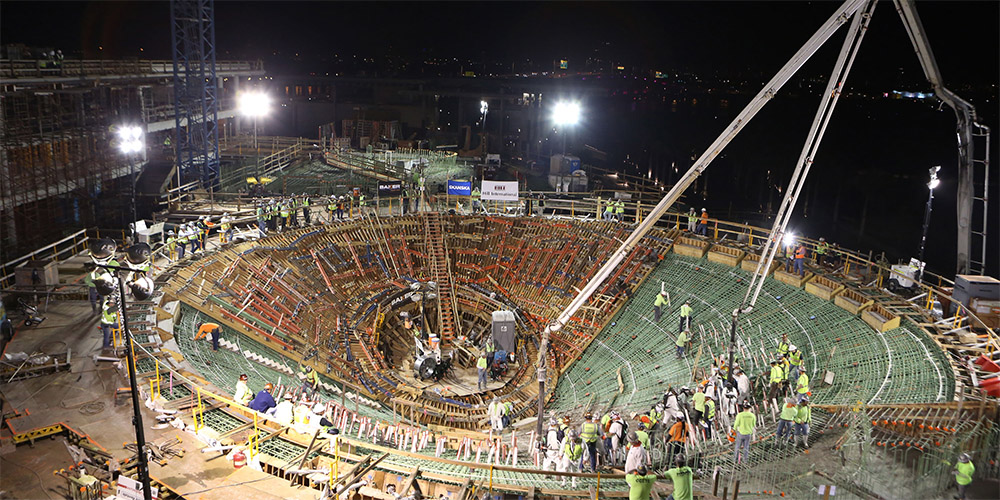
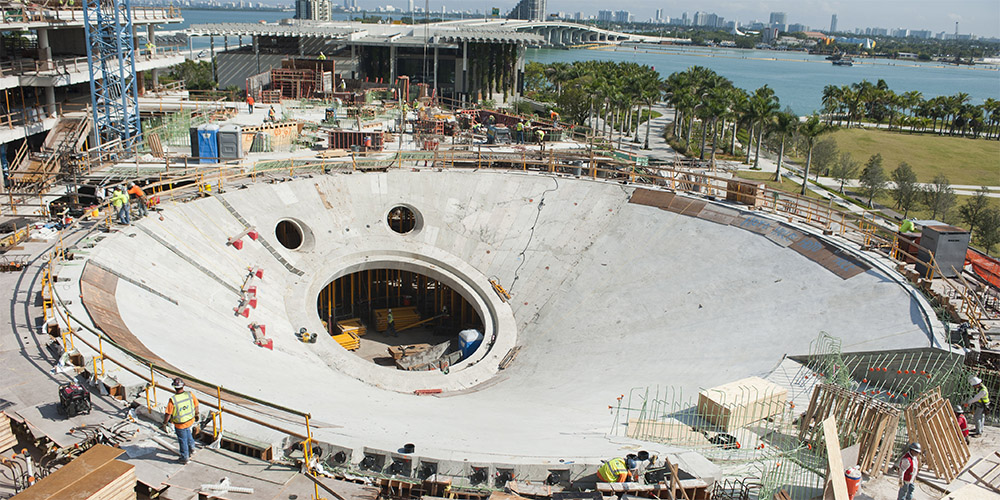
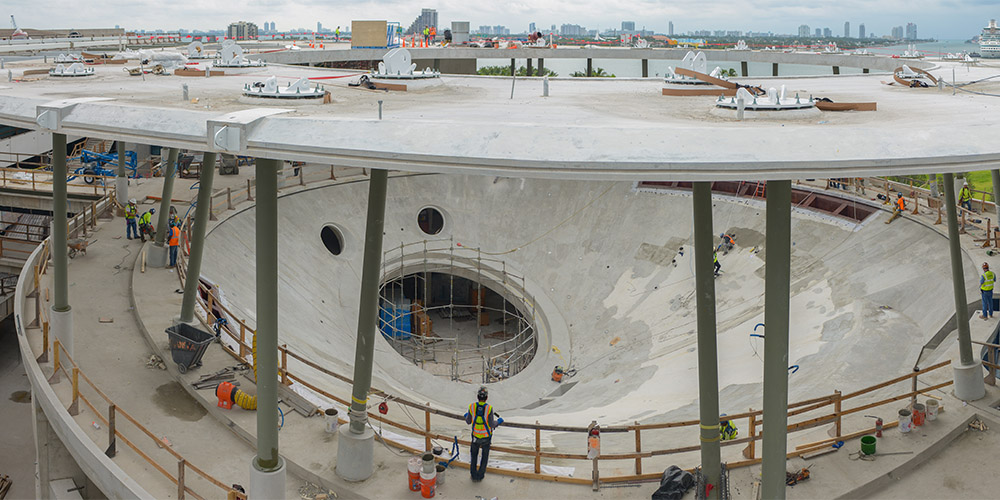
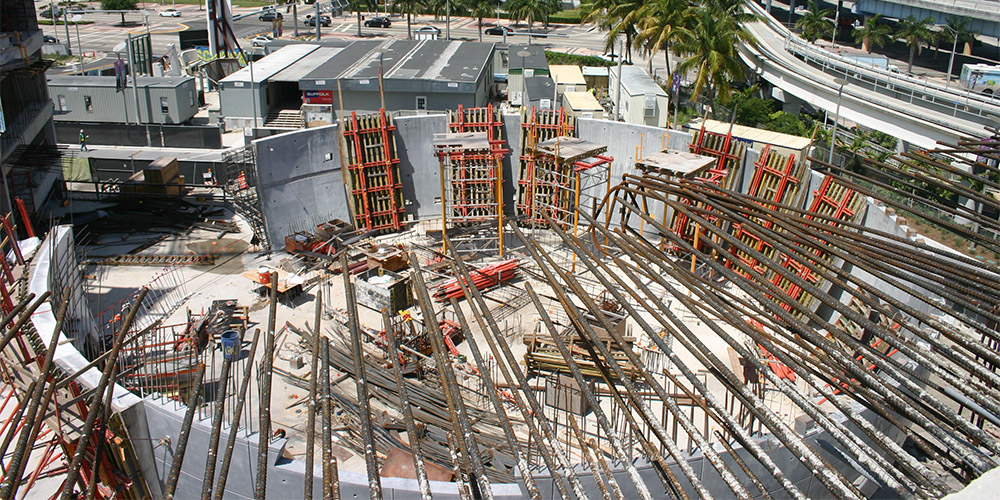
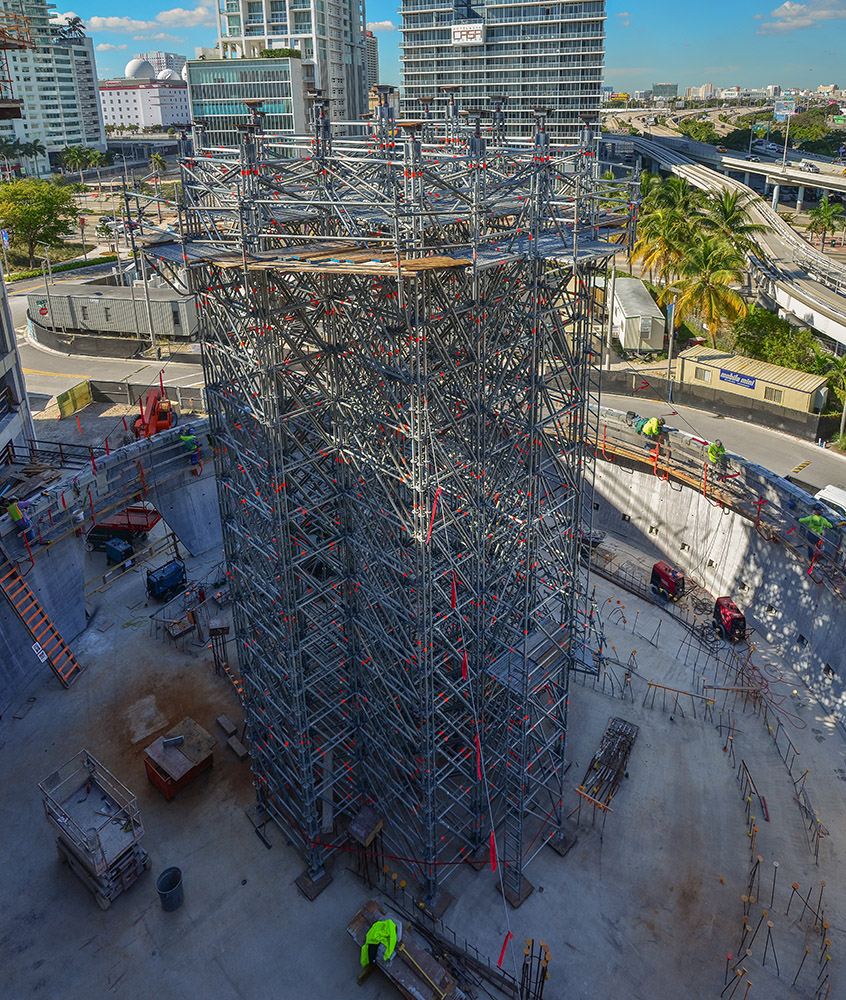
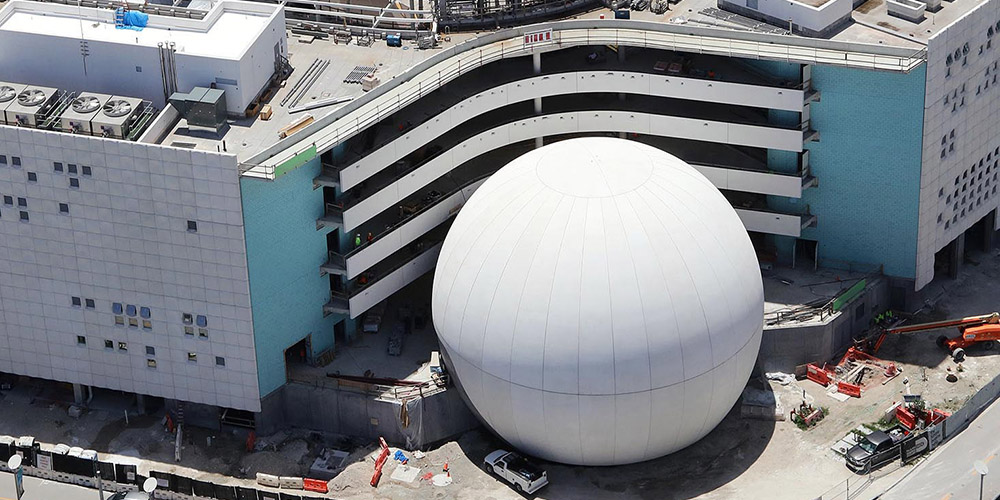
Frost Planetarium
The 67-foot diameter Frost Planetarium is made of both cast concrete on the lower half, and 32 pre-cast “orange peel” sections that were produced offsite and placed atop the precast base, forming a perfect dome. Each of the precast panels weighs 50,000 pounds, and required a 550-ton crane. During assembly, engineers first created a 50-foot-tall central shoring tower and welded the precast dome panels on one at a time, and opposite one another, to avoid lateral loading on the dome cap. The installation required a 24-hour-a-day/seven-day-a-week schedule over two-and-a-half weeks.
Storm Resiliency
We designed Frost Science to withstand life in a hurricane zone, and in a city facing ramifications of sea level rise. The site’s foundation and open parking stands at 9’6” above sea level, allowing the first floor of the building to sit 21’8” feet above sea level, exceeding requirements by more than 50%. Everything that is below the first level, including back-of-house storage, sits within a foundation of waterproof concrete with enclosed spaces protected by water-tight storm surge doors.
Caring for our animals during storms is crucial. The building’s emergency generators are large enough to provide backup power to emergency systems, aquarium life support systems and critical HVAC systems. They, along with the main electrical rooms, are located 37’6” above sea level, putting them well out of range of storm surge. Additionally, the generators run on both diesel fuel oil and a combination of fuel oil and natural gas, which is available via underground pipes even when roads are impassable by refueling trucks.
Aquatic Life Support Systems
The Aquarium consists of six large aquatic systems and several smaller environments supporting thousands of animals ranging from sharks to shrimp to alligators. Frost Science operates closed aquarium systems, meaning that though we pull water from nearby Biscayne Bay, supplying natural sea water to our exhibits, we do not discharge water into the bay, instead sending used water to a sewage treatment facility so as to avoid contributing any disease or parasites to the wild ecosystem where it would affect native fish.
To attain good clean water, we wait for an incoming tide, then pump in 35,000 gallons at a time through a large pipe a few hundred yards away at the sea wall to Biscayne Bay. We then store it in a raw water basin, pass it through sand filtration for clarity and ozone filtration to kill parasites and bacteria. The result is very clear and high quality salt water that we then use in various habitats.
Each major environment, such as the Gulf Steam Aquarium or Reef Fish environment, function independently with their own life support system, which utilizes two types of natural bacteria that grows in the filter to convert fish waste (ammonia) into nitrite and then nitrate, the least toxic form of waste conversion. That nitrate is then managed by changing out about 10 percent of the water each week.
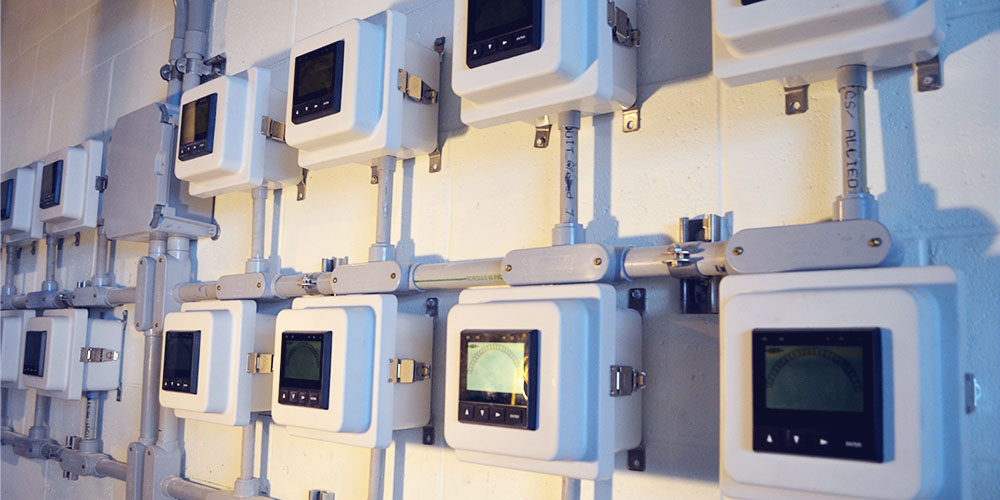
Our staff keeps track of life support systems via computers that constantly measure data points of oxidation reduction potential (ORP), which indicates how well the ozone system is working. Additionally, the tracking system keeps tabs on proper water flow, temperature and filter pressures, and alerts the staff if anything seems amiss. Staff can also check in remotely to monitor any detail of how well the life support systems are functioning.
From a LEED standpoint, all our large pumps use variable frequency drives (VFDs) which only use as much power as needed for optimal flow rate, as opposed to being one speed, full-power at all times. We’re also using highly efficient and long-lasting LED lighting throughout the exhibits: 450-watt LED fixtures have replaced energy-sucking 2,000-watt fixtures that used to cause unwanted heat in various habitats, and we can now recreate the lighting conditions needed by live corals with LED fixtures.
Water Reclamation
Hard surfaces such as roads and roof tops cause water pollution and waste. To combat this, we have 25,000-gallon cisterns located on the ground level that catch and collect water that has run off our roof and plaza, and condensate water from our cooling coils. We then conserve and re-use this water in our air conditioning system and for irrigation of the green spaces around the museum.
Street and ground runoff from Museum Drive drains toward a vegetated area, which will be part of a wetlands that slows runoff and allows water to soak into the ground over a period up to 72 hours–long enough to be beneficial for the ground and vegetation, but not so long as to allow mosquitoes to breed. This prevents water from running down streets, collecting detritus and pollutants such as motor oils, and draining directly into Biscayne Bay.
Museum Time Lapse